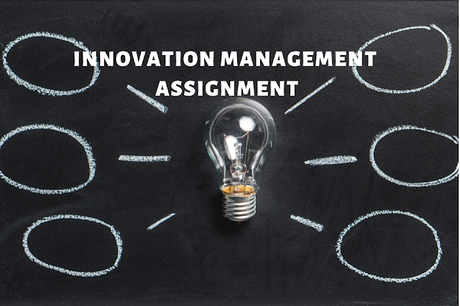
Introduction
The role of Managers illustrated in this Innovation Management assignment in guiding, training and developing the employees, which are considered as the basic unit of an organization is very essential. The active and potential performances portrayed and executed by the managers, enhance the efficacy of the company.
How can managers facilitate group performance?
Managers make a decision relating to the behavioral actions in accordance with the context stimuli. Making decisions and management of responses are completely different from each other. Every aspiring group manager should possess the basic awareness of the group dynamics before working with groups. The manager is responsible for establishing group beliefs; the vision of the group along with establishing effective communication within all group members, to enhance the efficacy of the group is the primary concern of the manager (Wooldridge & Floyd, 2017). The managers are allocated with the task of empowering the group members; the deliberate formation of subgroups is the major threat for a manager. Divide and rule policies are only legitimate in exceptional circumstances. The dire attempt to understand the interactions; the efficacy of the group is understood the intensity and clarity of interactions with the group members. This is clearly portrayed by the rate of execution of tasks by a group.
What is meant by organizational climate and culture and what are the differences?
Organizational climate refers to the physical and psychological variables within an organization, which thereby includes communication, trust, feedback and reward factors. It is also considered as the recurring patterns of behavior, attitudes and feelings that characterize life in the organization.
Organization culture refers to the norms, values, beliefs and traditions of an organization, incorporated in the norms and vision, thereby constituting the philosophy and behavior of the people in the organization (Iljins, Skvarciany & Gaile-Sarkane, 2015).
The basic difference between the Organizational Culture and organization climate is that climate refers to the shared perceptions of the people within an organization whereas culture includes the feelings of the people towards the organization.
What are the factors for developing a climate that fosters innovation in this innovation management assignment?
An organization needs to promote a positive climate that may keep the employees motivated and as a result would pave the path towards effective development of the organization (Shanker et al., 2017). Some of the key factors that facilitate the development of the organizational climate thereby triggering innovation are:
Structure- The organizational structure deeply impacts the climate of an organization thereby triggering its creativity and efficiency (Taştan & Davoudi, 2017). There's no ideal structure for a company or organization.
Leadership- The key factor for fostering innovation is a sustainable motivation that should be present throughout every stratum of an organization.
Communication- An appropriate communication strategy, along with a two-way flow of information, within every layer of the organization, creates an appropriate climate, which triggers the efficacy of the company thereby fostering innovation.
Training and Development- Training and development work hand-in-hand in accordance with the concept of fostering innovation. Proper training models and procedures, enhances the understandability and credibility of the employees thus providing the optimum threshold for the development of the basic units of the company thereby enhancing the efficacy and thus fostering innovation.
Conclusion This study of Innovation Management assignment concludes that the role of the managers in manipulating the climate and culture of the organization is the quintessential determining element for effectively fostering innovation thereby intensively enhancing the efficacy of the said organization in accordance with its credibility to deliver a quality production.
Iljins, J., Skvarciany, V., & Gaile-Sarkane, E. (2015). Impact of organizational culture on organizational climate during the process of change. Procedia-Social and Behavioral Sciences, 213, 944-950.
Shanker, R., Bhanugopan, R., Van der Heijden, B. I., & Farrell, M. (2017). Organizational climate for innovation and organizational performance: The mediating effect of innovative work behaviour. Journal of vocational behaviour, 100, 67-77.
Taştan, S. B., & Davoudi, S. M. M. (2017). The relationship between organisational climate and organisational innovativeness: testing the moderating effect of individual values of power and achievement. International Journal of Business Innovation and Research, 12(4), 465-483.
Wooldridge, B., & Floyd, S. W. (2017). Some middle managers are more influential than others: an approach for identifying strategic influence. Innovation management assignment. In Handbook of Middle Management Strategy Process Research. Edward Elgar Publishing.
